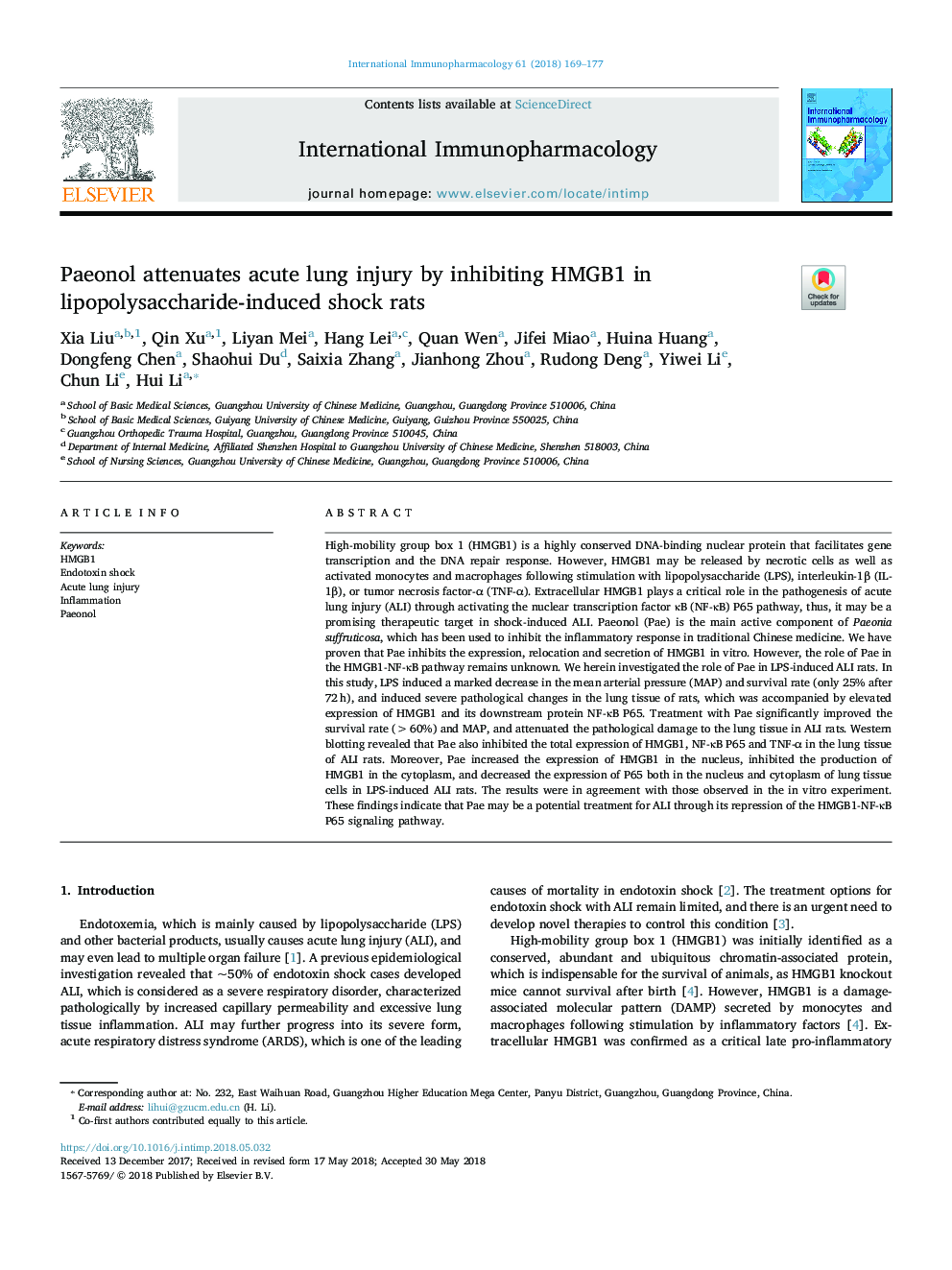| کد مقاله | کد نشریه | سال انتشار | مقاله انگلیسی | نسخه تمام متن |
|---|---|---|---|---|
| 8531061 | 1559729 | 2018 | 9 صفحه PDF | دانلود رایگان |
عنوان انگلیسی مقاله ISI
Paeonol attenuates acute lung injury by inhibiting HMGB1 in lipopolysaccharide-induced shock rats
دانلود مقاله + سفارش ترجمه
دانلود مقاله ISI انگلیسی
رایگان برای ایرانیان
کلمات کلیدی
موضوعات مرتبط
علوم زیستی و بیوفناوری
ایمنی شناسی و میکروب شناسی
ایمونولوژی
پیش نمایش صفحه اول مقاله

چکیده انگلیسی
High-mobility group box 1 (HMGB1) is a highly conserved DNA-binding nuclear protein that facilitates gene transcription and the DNA repair response. However, HMGB1 may be released by necrotic cells as well as activated monocytes and macrophages following stimulation with lipopolysaccharide (LPS), interleukin-1β (IL-1β), or tumor necrosis factor-α (TNF-α). Extracellular HMGB1 plays a critical role in the pathogenesis of acute lung injury (ALI) through activating the nuclear transcription factor κB (NF-κB) P65 pathway, thus, it may be a promising therapeutic target in shock-induced ALI. Paeonol (Pae) is the main active component of Paeonia suffruticosa, which has been used to inhibit the inflammatory response in traditional Chinese medicine. We have proven that Pae inhibits the expression, relocation and secretion of HMGB1 in vitro. However, the role of Pae in the HMGB1-NF-κB pathway remains unknown. We herein investigated the role of Pae in LPS-induced ALI rats. In this study, LPS induced a marked decrease in the mean arterial pressure (MAP) and survival rate (only 25% after 72â¯h), and induced severe pathological changes in the lung tissue of rats, which was accompanied by elevated expression of HMGB1 and its downstream protein NF-κB P65. Treatment with Pae significantly improved the survival rate (>60%) and MAP, and attenuated the pathological damage to the lung tissue in ALI rats. Western blotting revealed that Pae also inhibited the total expression of HMGB1, NF-κB P65 and TNF-α in the lung tissue of ALI rats. Moreover, Pae increased the expression of HMGB1 in the nucleus, inhibited the production of HMGB1 in the cytoplasm, and decreased the expression of P65 both in the nucleus and cytoplasm of lung tissue cells in LPS-induced ALI rats. The results were in agreement with those observed in the in vitro experiment. These findings indicate that Pae may be a potential treatment for ALI through its repression of the HMGB1-NF-κB P65 signaling pathway.
ناشر
Database: Elsevier - ScienceDirect (ساینس دایرکت)
Journal: International Immunopharmacology - Volume 61, August 2018, Pages 169-177
Journal: International Immunopharmacology - Volume 61, August 2018, Pages 169-177
نویسندگان
Xia Liu, Qin Xu, Liyan Mei, Hang Lei, Quan Wen, Jifei Miao, Huina Huang, Dongfeng Chen, Shaohui Du, Saixia Zhang, Jianhong Zhou, Rudong Deng, Yiwei Li, Chun Li, Hui Li,